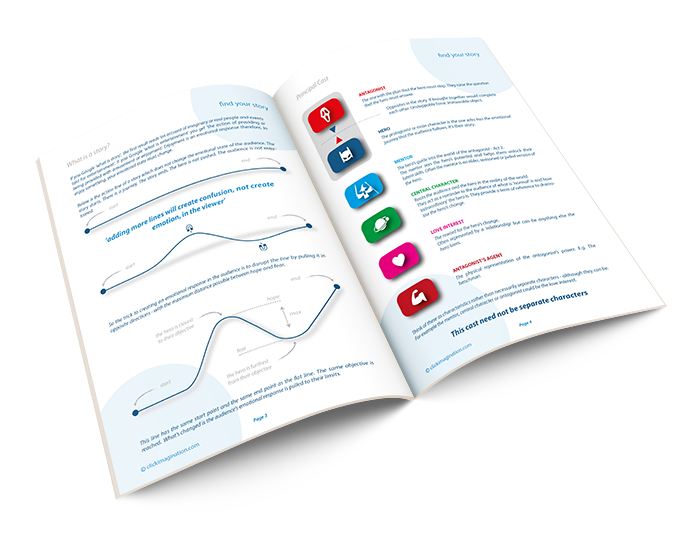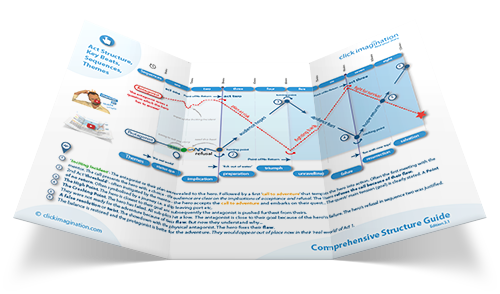Structure is in everything we do. we know it as a beginning, middle and end. It's the way we organise sentences, do our shopping or tell a joke. Creating and planning with a 3 Act Story Structure is intuitive. Writing a story uses the same logic that's inherent in everyone and simply formulates it into an 'act structure'. Act structure is not every twist and turn it's the broad strokes of the hero's journey.
Understanding the rules of story structure helps to you unlock your story's full potential. Once you know the rules - you can have fun breaking them!
Understanding the relationship between the protagonist (hero) and antagonist (villain) is key to unlocking any story's structure. As the antagonist's goal has necessitated the hero to take action to stop them, the closest the hero actually gets to stopping them then the further the villain is from achieving their goal. The objectives of the antagonist and protagonist are bound together. Moreover, the further the antagonist gets pushed from achieving their goal, the harder they will push the protagonist back. This creates a swinging pendulum effect throughout the whole of the movie with the extremes of the swing being beats 3 and 4.
Download the structure charts and worksheets. An explanation of how to use them is covered by the video tutorial.
Understanding story structure means understanding the key, dramatic turning points of a story which create the maximum tension, drama and thrills for the audience.
The six key beats provide a pretty clear roadmap and create the rollercoaster ride the audience expects. If you don't take your character within an inch of their goal and then snatch it away or take them so far that they lose everything - then your character hasn't really been on a journey.
A writer who understands structure gives producers, publishers, directors and agents the confidence that they’re not just flying on luck.
The thought of a 'structure' can be off-putting at first and many new writers resist the idea of such seemingly hard and fast rules. charts and graphs - such as the one below - could dry up the creative juices of those who just want to get down on paper all the cool stuff that's in their heads. the truth is you have to work through it. with practice, act structure becomes intuitive and you'll soon absorb it. you can then get on with the fun job of writing your story safe in the knowledge that acts, beats and sequences are all in place subliminally.
Act structure is a good guide to the pace of a story and an indication that there's either too much or too little scene setting in act one or too little or too much time for resolution in act 3.
Structure doesn’t make a good writer bad. Story Structure simply gives a writer a framework upon which to build or review a story.
It's natural to fear a 'story structure' will restrict a writer's creative flow. Quite the opposite is true.
Structure provides a framework for discussion to allow writers, editors, producers, directors and actors to talk with confidence about a story and make improvements.
Breaking your story down into sequences is a good way to analyse it. Themes are also useful to draw common parts of a story together and make sure they develop in tandem. This may seem like a device, and it is, but it's also logical.
now choose your canvas


